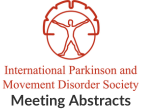Mcleod syndrome: Systematic review with meta-analysis
Objective: Analyze, review and describe the pathognomonic or characteristic signs and symptoms of Mcleod syndrome. Background: Mcleod syndrome is caused due to a mutation of…Cardiovascular risk factors in a pre-manifest and manifest population of Huntington’s disease
Objective: To identify cardiovascular risk factors in a self-reported series of local Huntington's disease participants in the ENROLL-HD registry Background: Population studies have contributed to…Measure of Social Relation in Huntington’s Disease: The Relationship Self-Questionnaire (RSQ)
Objective: Development and validation of the Relationship Self-Questionnaire (RSQ), specific to Huntington’s disease (HD), which aims tomeasurepatients self-perceived quality of their relationships (RS). Background: In…The genetic study of hereditary chorea in Kazakhstan
Objective: To analyze the genetic background of hereditary chorea in Kazakhstani population. Background: Hereditary chorea (HC) is a group of inherited movement disorders presenting with…Interrater Agreement for Movement Disorder Classification in Children with Mixed Movement Disorders
Objective: To determine interrater agreement on the classification component of the Movement Disorders-Childhood Rating Scale (MD-CRS). Background: The MD-CRS consists of three parts: classification, general assessment, and…A Young Patient with Paroxysmal Choreoathetosis
Objective: To describe a rare pediatric movement disorders. Background: The differential diagnosis of paroxysmal movement disorders in children are broad and challenging. Early recognition by…Burden of Huntington’s disease (HD) on loss of employment status and its association with disease stage
Objective: To evaluate the impact of HD on patients’ employment status and understand its association with disease stage. Background: Work disability is an important outcome…Remote monitoring of physical activity and falls in patients with Huntington’s disease using wearable sensors
Objective: To investigate the use of a novel tele-health system to remotely monitor physical activity and falls in patients with Huntington’s disease. Background: Increased physical…Chorea: A Case Series
Objective: To investigate and characterize the different causes of chorea in our cohort of patients and to compare phenotypically those with a positive and negative…TAU pathology contributes to specific patterns of structural brain damage and neuropsychological heterogeneity in Huntington’s disease
Objective: Explore the associations between CSF levels of neurofilament light chain (Nfl), total TAU (tTAU) and phosphorylated TAU (pTAU), structural brain damage and cognitive performance…
- « Previous Page
- 1
- …
- 11
- 12
- 13
- 14
- 15
- …
- 20
- Next Page »
